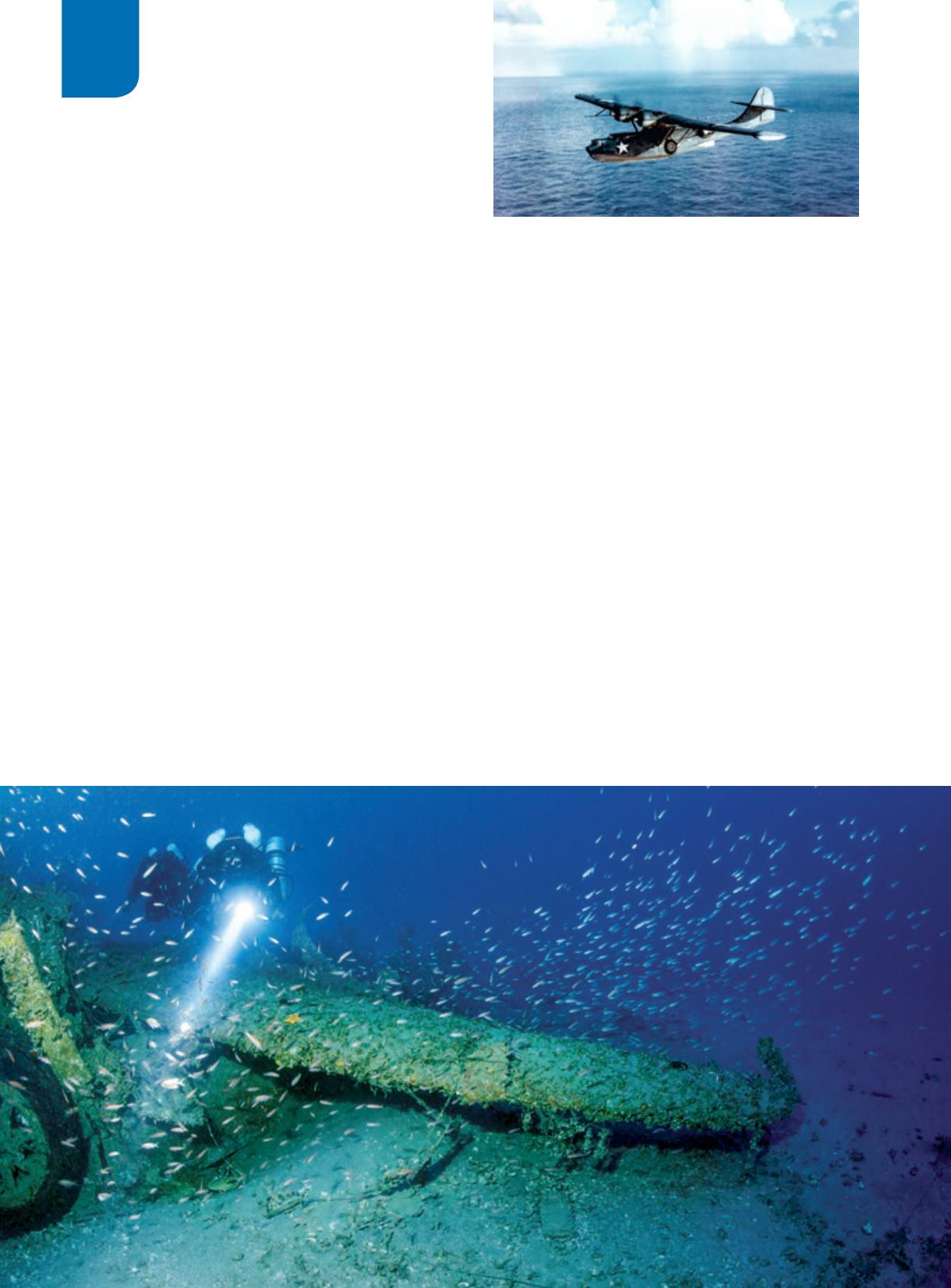

For the first day of diving in September 2016 we
chose a site where we had seen signs of an airplane’s
remains resting on the bottom at 310 feet. Looking at
the monitor of the sonar, we were excited to see the
clear shape of wings and part of a fuselage. We were
eager to take the plunge, to go where no one had been
before us, and to break the silence of forgetfulness
by bringing to the surface knowledge of the events
that caused the sinking. We felt the excitement of the
discovery, but after a few minutes we had to control
our enthusiasm and remain calm.
Taking pictures at 300 feet is not an easy task for
the camera gear or the photographer, who must
simultaneously leverage extensive knowledge of both
technical diving and photography. Working under more
than 10 atmospheres of pressure requires all divers to
have a clear plan and a goal in mind. Nothing can be
improvised; there is no time to experiment with settings
to find the right one through trial and error.
Though we had only 25 minutes on the bottom, we
spent more than 130 minutes doing decompression
stops at various depths for a total dive time of more
than 2.5 hours.
In those 25 minutes, however, we photographed
in detail a PBY Catalina aircraft that sunk Sept. 12,
1944, during an attempt to rescue five survivors from
a very rough sea. The survivors were the crew of the
Consolidated B-24H Liberator #41-28762 Tailwind,
assigned to the 515th Bomber Squadron of the 376th
Heavy Bombardment Group, 15th Air Force in San
Pancrazio, Italy. On Sept. 12 the crew participated in a
raid on Munich, Germany, that focused on the Allach
BMW Engine Works. That day the Allach engine works
and the Wasserburg aircraft factory were assaulted
by nearly 330 Boeing B-17 Flying Fortresses and
Consolidated B-24 Liberator heavy bombers supported
by P-38 and P-51 fighters.
On the return flight to San Pancrazio, the rudder
control of this B-24H failed; the plane dropped out
28
|
WINTER 2017
DIVE SLATE
REDISCOVERING HISTORY
“TAKING PICTURES AT 300 FEET IS NOT AN EASY TASK
FOR THE CAMERA GEAR OR THE PHOTOGRAPHER.”
When a bomber crashed in the Adriatic Sea after an attack on
Munich on Sept. 12, 1944, a PBY Catalina aircraft set out
to rescue its crew. The Catalina landed on the rough sea and
rescued several crew members but was unable to take off again.
Fortunately its crew and those it picked up were soon rescued.


















